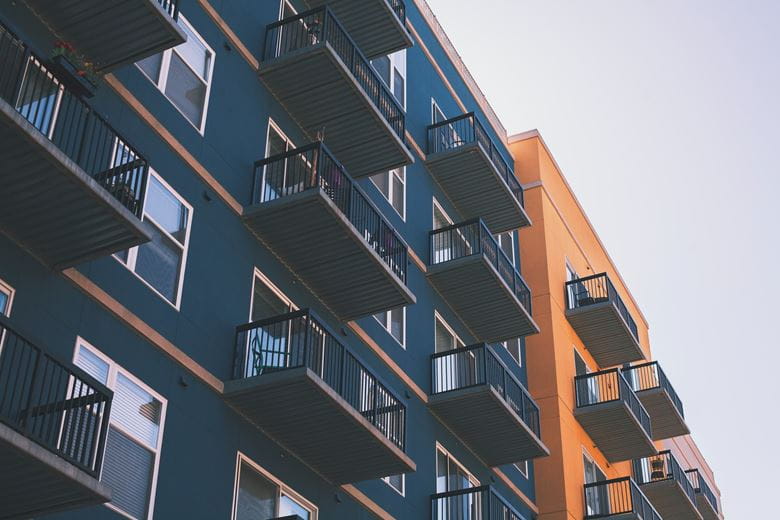Purpose-built student accommodation (PBSA) should provide an invaluable resource to the higher education institution (HEI) it intends to serve, and also support students by providing a safe and secure environment which is located close to lectures and local amenities. The situation, following the global pandemic over the last twelve months, has been unprecedented and has demonstrated the value of high-quality student accommodation.
Research suggests that, in comparison to the house in multiple occupation (HMO) rental market, the PBSA sector has handled the challenges that COVID-19 has presented in a more effective way. This highlights the benefits of PBSA as professionally managed, high-quality purpose-built housing, compared to the traditional ‘student house share’ model of an HMO.
As a result of the COVID-19 pandemic, we have also seen a considerable increase in online learning, which could result in student’s attitudes towards accommodation changing. If the future is a blend of online and in-person tutoring, more time would be spent in student accommodation. Historically, poorer quality PBSA from past years, or traditional HMOs, have created many negative perceptions of the sector, which the development industry has found hard to shake off.
With tuition fees up to £9,250 per annum for domestic students and potentially up to an eye-watering £38,000 per annum for international students, PBSA providers continue to evolve their product to respond to the needs of more discerning students. Providers are often also acutely aware of local community concerns.
There remains apprehension for many local communities, with the ‘town vs. gown’ argument playing out on local and site-specific problems, for example: scale and design; amenity issues such as parking; inclusivity and affordability; and wider pressures on the local housing market. Arguably, repurposing student HMOs could reduce demand on existing housing stock. Yet, it is unclear whether local landlords would be happy to convert their properties back into family accommodation, alternatively they may look to move into other sectors to fill their bedspaces.
Due to the pandemic, the actual demand for student accommodation need to serve HEIs has become less clear. Many local councillors, who ultimately make local planning decisions, have a perception of limited future need for PBSA, yet student numbers and wider growth of HEIs contest this theory. The growth in student numbers, already seen from UCAS, follows countercyclical economic trends where student numbers increase rapidly when employment opportunities are scarcer. This makes the need for high-quality PBSA even more pressing over coming years as the UK battles through both the fallout of Brexit and the COVID-19 pandemic.
Each Local Planning Authority (LPA) that has a large university presence must wrestle with these pressures, which in some instances have resulted in several draconian planning policies.
Issues affecting the PBSA sector
About PBSA
- PBSA now accounts for over 34% of the total bedspaces that serve the 1.89 million full-time students in the UK. This is characteristically split into three elements, as outlined by the graph below:
- In the above graph, privately operated PBSA is also further segmented depending on a number of factors, for example target student market, HEI, product offer and price point. Therefore a ‘one size fits all’ approach to PBSA should be treated with caution.
- The remaining 1.23 million bed spaces for full-time students are typically provided by HMOs or by students living at home. As this article considers, HMOs impact on the permanent local communities around universities. PBSA is often, but not always, placed within a rump ‘student sector’ and seen by LPAs as a difficult use class. However, this should not be the case. PBSA should provide a safe, secure environment for students and be well-managed by PBSA operators. This counteracts the potentially unmanaged nature of HMOs and the associated local housing and amenity issues which these often present. There are also other benefits to local communities as a result of PBSA, for example direct investment, which creates new jobs and often provides funds via planning obligations to improve the local environment.
What is next for the PBSA sector?
Emerging from COVID-19, the PBSA sector remains buoyant as student numbers across the UK continue to increase. With HEIs seen to be key drivers of economic growth and innovation in the towns and cities they serve, it is paramount that the benefits of well designed, safe and well managed PBSA are identified as a means to support the offer of HEIs and meet student requirements.
For PBSA to be embraced by elected officials and local community groups, the perceived amenity issues associated with over-concentration HMOs in university towns and cities need to be clearly separated from the sector.
Why choose Carter Jonas to provide PBSA advice?
With over 1000 property professionals and a network of offices across the country, we are well placed to provide specific local planning advice and commercial market intelligence on PBSA. For further information on the sector, or to discuss your PBSA requirements, please contact us.
Article sources:
Bonard, HESA, Commonslibrary.parliament.uk, Save the Student, StuRents







